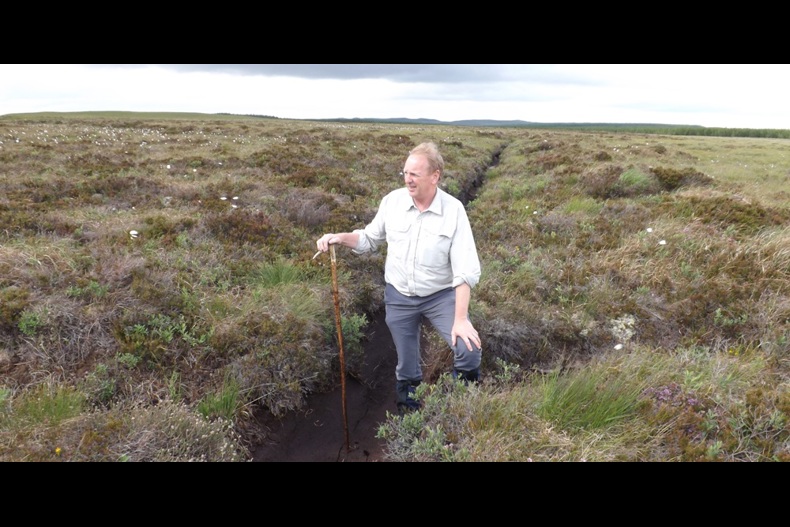
SSE's Neil McKay Forestry and Ecology Team Manager pictured in a peatbog damaged by commercial forestry activity
SSE’s Strathy South windfarm took a step closer yesterday with Highland Council officials recommending councillors raise no objection to the development.
The 47 turbine development is situated 12km from Strathy village. As well as generating up to 160MW of renewables energy, SSE plans to restore 12sqm of native peatlands which have been damaged by commercial forestry over the years.
Host Community Council Strathy and Armadale has given its unanimous written support for the Strathy South wind farm.
SSE Renewables project manager Nicki Small reveals more about the development:
Why this site?
It has good wind speeds with almost no visual or noise impacts for local communities. It also sits on an area of commercial, non-native forestry plantation in the Flow Country, which has caused continuous damage to the native peatland from practices such as ploughing and draining to the area. Despite the trees being planted in the 1980s, the plantation still struggles to grow to full height for commercial felling, so the damage continues.
What environmental impact will the project have?
The wind farm would generate up to 160MW of energy to help Scotland reach its target of 100% equivalent energy from renewables by 2020. While the proposed wind farm’s infrastructure would have an impact on part of the ground, this is a very small proportion (around 5%) of the site area and has been designed to be sited within already disturbed areas. Our proposal is to remove all remaining commercial forestry from the site (a total of 1,000 hectares) as part of a wider peatland restoration and management plan.
Why is peatland restoration so desirable?
Peatlands are like ground level rainforest, rich in flora and fauna. They’re also a great form of natural carbon capture and storage. In Sutherland and Caithness the major damage caused to peatlands by inappropriate commercial forestry is a problem – Strathy South wind farm would deliver one of the biggest restoration and management programmes the region has ever seen (12 square miles) within and around the wind farm over the lifetime of the project.
What will the economic impact be?
SSE has a longstanding Highland heritage and recognises the importance of investment in rural communities that are often economically fragile. Strathy North wind farm already supports many local jobs and has generated millions of pounds of investment for local and wider Highland firms. Strathy South would also generate strong business opportunities.
Would there be a community benefit fund?
Yes, SSE has a policy of providing £5,000 per megawatt in community benefit funds which would apply for Strathy South. Local communities will also have the opportunity to invest in the project.
What about the RSPB’s campaign against this project?
RSPB is a well regarded organisation that carries out positive work. The project is close to the RSPB’s Forsinard reserve, and SSE understands the concerns they have raised. However RSPB has over-stated the likely impact of the project, which is disappointing. Expert ornithologists have conducted bird impact studies over a 10 year timespan in preparation for our proposed development and SSE has gone through a range of mitigation stages to provide the best balance for local economy, renewable energy and wildlife. RSPB is removing commercial forests in other areas of the Flow Country but cannot manage it alone, as peatland restoration on this scale is a massive task. Given the huge costs of restoring the peatland, I believe renewable energy can have a positive role to play.
Why has SNH raised concerns?
SNH's general position is very welcome and through continued dialogue the majority of their initial concerns have now been fully addressed by SSE. Expert ornithologists are confident that remaining concerns set out on two species – greenshank (which have been shown to reside on wind farms with negligible collision risk) - and a single pair of red throated divers, are manageable and can be overcome with further constructive dialogue with SNH and the Scottish Government.

